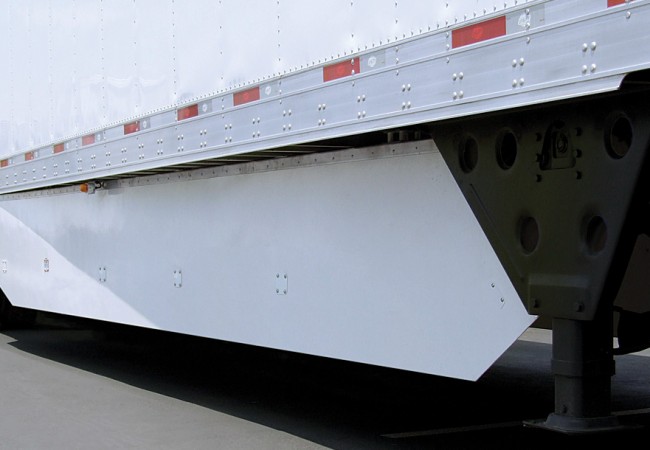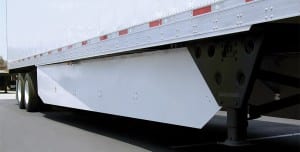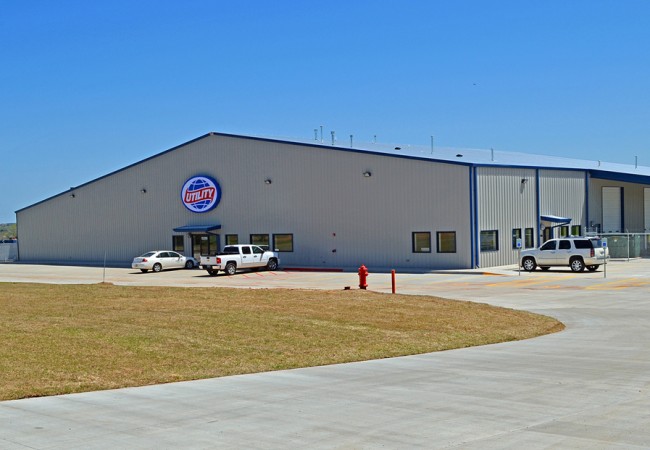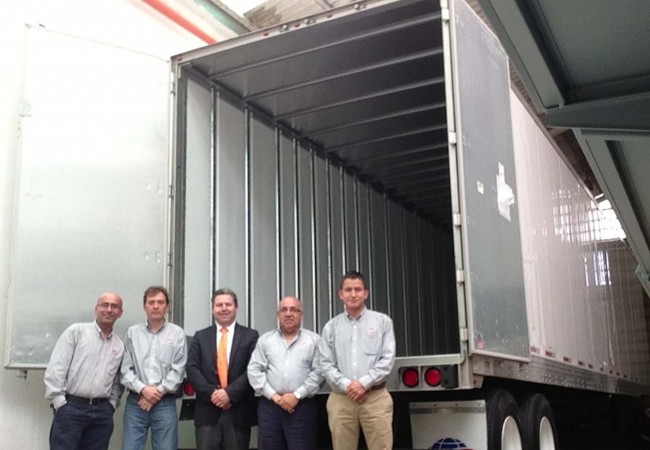New Utility Tri-State Location In Oklahoma City Established in 1973,…

Benefits of Aerodynamic Technology
Utility customers provide insight on the use and value of aero devices Since the California Air Resources Board (CARB) Heavy Duty Vehicle Greenhouse Gas Emission Reduction Measure mandate effective in 2010, certain trailers in California need to be equipped with various combinations of aerodynamic technologies.
To assist with the compliance, Utility designed the SmartWay® verified USS 120A-4 aerodynamic side skirt, which many of its customers have installed on their trailers to comply with the regulations. However, many of Utility’s customers outside of California fully utilize aerodynamic devices without needing to be CARB compliant.
Utility reached out to those customers to explore their views on the use and value of aerodynamic devices that are not for the sole purpose of meeting California’s CARB regulation.
Refrigerated Express, which provides food buyers sourcing solutions and logistics implemented aerodynamic devices as a means for cutting costs. “These types of technologies add to our bottom line,” said Patrick Barker, President of Refrigerated Express. According to Barker, Refrigerated Express has seen about a 12% decrease in amount of gallons of fuel used in a week since equipping his 36 vehicles with aerodynamic devices. “We are based in Florida and are not required to reduce emissions, but we see a huge benefit in fuel savings while helping the environment.” Refrigerated Express’ fleet utilizes several different combinations of aerodynamic devices including Utility’s USS 120A-4 patented side skirts. “We are constantly trying to find solutions to reduce costs and emissions. I’m currently working on a new long haul solution that will provide even greater savings for our fleet,” added Barker.
Another Utility customer, Penske Logistics, headquartered in Reading, Pennsylvania, operates a fleet of approximately 1,900 semi-trucks and 2,900 trailers that consist of dry vans, reefers and flatbeds. The company uses aerodynamic devices in an effort to maximize fuel economy and maintain its outstanding performance ratings for reducing emissions through the EPA’s SmartWay Transport Partnership. Being outside of California, the company’s motivation isn’t compliance, but they see larger benefits in utilizing these devices. “Aerodynamic and well-maintained trailers play an important role in helping us achieve our SmartWay program goals,” said Doug Macolley, Vice President-Fleet Operations for Penske Logistics. “We use the latest technologies available within our fleet, from our power units to the trailers, to help us continually improve performance.” From 2011 to 2012, Penske Logistics reduced its carbon dioxide emissions by 25% and nitrous oxide emissions by 40%, which earned them EPA’s 2013 SmartWay Excellence Award.
Companies outside of California that have not implemented aerodynamic devices might be able to catch a break. A recent relief from CARB gives owner-operators
and fleets on the East Coast who seldom enter California, or keep their in-state miles below the 5,000 to 7,500 ranges per year, an exemption through 2020. This low-use
exemption was boosted from a 1,000 miles cap a year per truck. Regardless of whether its compliance, reducing emissions, or achieving overall fuel savings, some see value in investing in aerodynamic devices so CARB may not be the only organization governing change.



